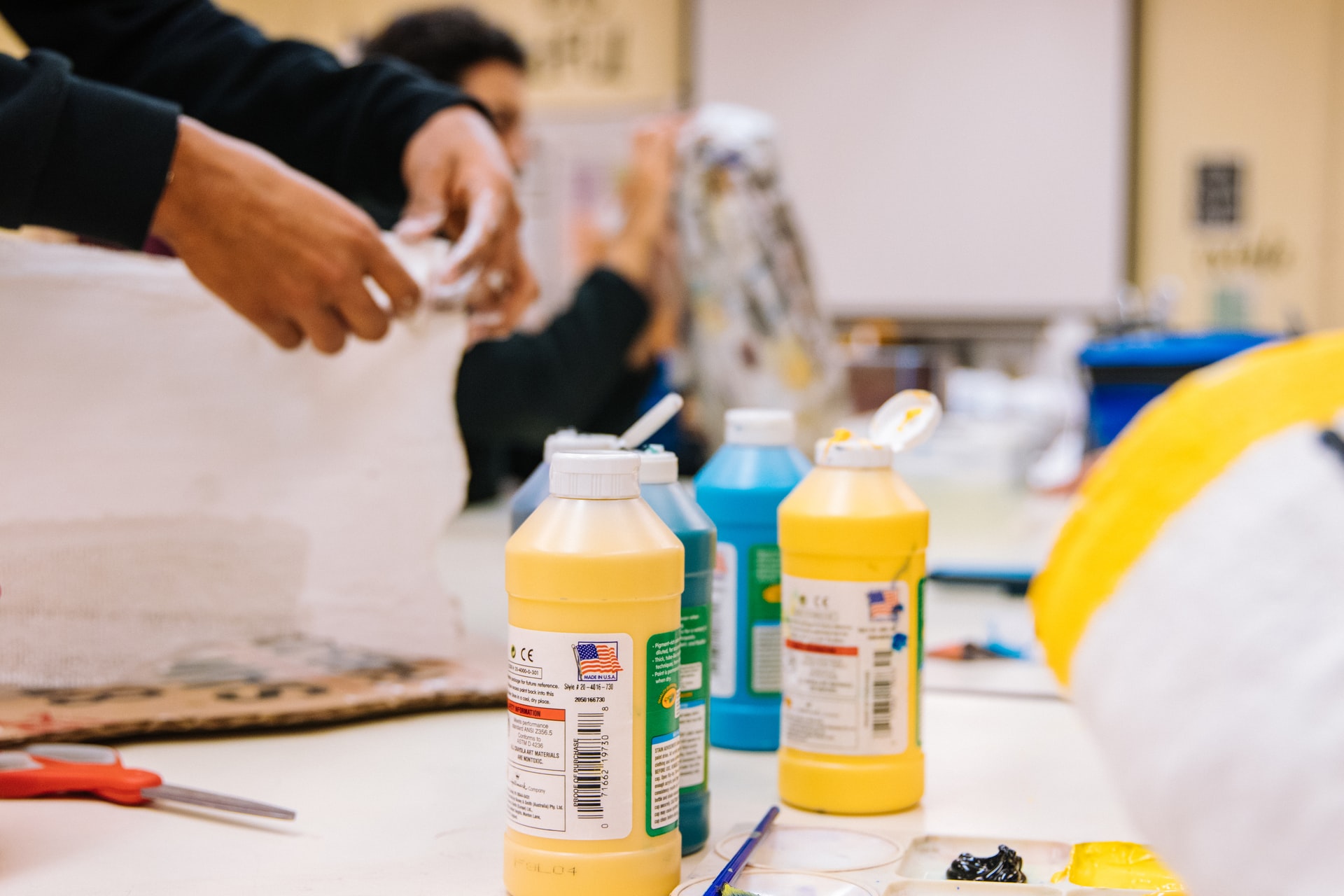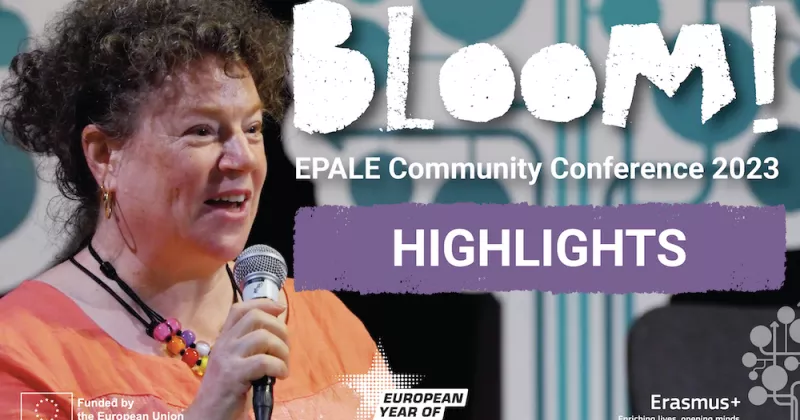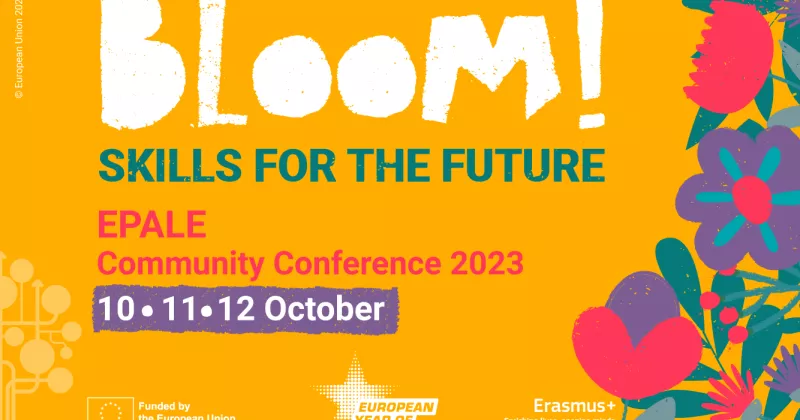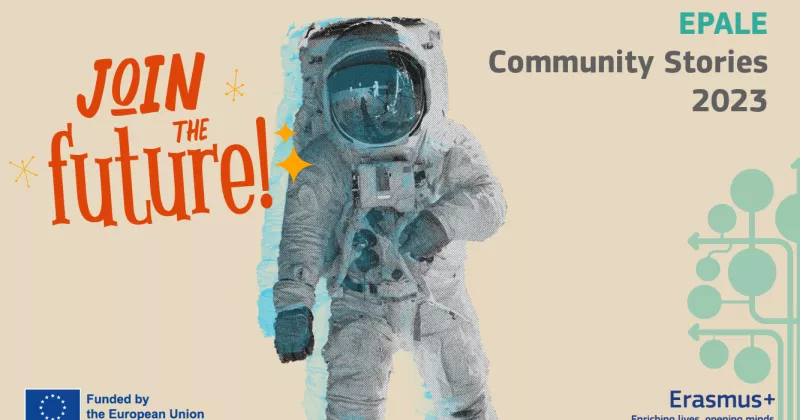How to communicate about science in adult education - and why art can help

Have there been any recent news, in Europe or globally, that inspired feelings other than doom and gloom? You might disagree with me, but I would say yes. NASA has just released pictures that look back almost at the origins of the universe, and they are amazing.
I am of course referring to the images taken thanks to the James Webb Space Telescope, which was launched in December 2021 and since then has become fully operational. The Webb telescope has the potential to uncover new information about stars, exoplanets and galaxies; it has already brought us the deepest images of the universe yet. Having first seen the images, I could not believe that they were not primarily intended as a work of art. Just take a look yourself.
Incidentally, art plays a significant role in communicating about the Webb telescope, its mission and, as we move forward, its results. Before the telescope was first launched, twenty-two artists were invited to produce works of art based on what they were briefed about by the project personnel. That said, you do not need to be a NASA-selected artist to showcase your art: anyone can submit their work to the Webb telescope inspired Flickr group.
Also in Europe, the potential for collaboration between art and science has not gone unnoticed. The New European Bauhaus initiative invites everyone to reimagine the future by bridging science and technology with art and culture. In primary and secondary education, teachers call for embedding STEAM in the curricula instead of STEM (adding “Arts” to Science, Technology, Engineering and Mathematics). The EU’s Education for Climate Coalition includes a few inspiring resources and initiatives that use art to teach about the climate crisis. Sadly, if you attempt to add your own resources, you will quickly see that “adult education” is nowhere to be found on the list of eligible sectors.
This brings me to two questions: is there space for art-based approaches in science education for adults? And why do we need art to communicate about science in the first place?

Why use art to teach about science?
Starting with the most apparent reasons, art can illustrate the beauty of science, which might otherwise seem complex and unapproachable. Again, the images of and inspired by the Webb telescope are a case in point. Art can also give space for “aesthetic distancing”: putting well-known issues in a new light. Going beyond the aesthetics, some studies see art as more likely to engage people and evoke emotions, focusing on the affective rather than cognitive aspect of learning. This can be particularly beneficial in climate science education. Learning about the climate crisis can trigger different emotions, often negative, such as feeling anxious, powerless or distressed. The use of art can not only encourage citizens to take action but can also support them in processing these complex emotions and in reflecting on their own values.
For those of us working in non-formal adult education, the concepts of participatory and learner-centred approaches will likely be very familiar. Unsurprisingly, they also lie at the heart of effective art-based learning. According to the results of ParCos, a Horizon 2020 project on Participatory Communication of Science, art-based methods can enable participatory processes of making sense of scientific data. The handbook produced by project partners looks at the use of art-based methods to encourage participants to both collect and interpret their own data. One example is a video-based exhibition that created a personalised weather forecast for the participants. Set up by the Flemish public broadcaster VRT together with the LUCA School of Arts, it invited participating families to explore and draw conclusions from historical weather data. They were also asked to enter their date of birth to see the information from a wider perspective about climate change.
Finally, art education is increasingly recognized as important in preparing scientists to communicate their work with the wider public. Consider the story of a scientist who took part in improv theatre and embraced the “yes, and” concept as a result: accepting what other performers say and following their train of thought. Her experience in improv proved to be particularly useful when engaging with participants in science seminars, by not only combatting the fear of public speaking but also accepting all questions asked.

Art-based science education in the classroom and beyond
Encouragingly, there are already many practices in non-formal adult education that we can draw inspiration from to explore the connection between art and science. A number of upcycling projects are running across Europe that showcase the impact of plastic waste while producing arts and crafts. One example is the Humade Crafts workshop organised by the Mosaik Support Centre in Lesvos, Greece, which invites learners to create handicrafts using discarded objects. Last June, the Great Exhibition Road Festival in South Kensington, UK, held workshops, talks, exhibitions and performances which included, among others, an opportunity to build your own musical instrument or to redesign your old clothes. Museums are also a fascinating space for discovery about science through art, as we discussed a few months ago during our EPALE podcast. Personally speaking, I still remember visiting an exhibition at the Design Museum in Helsinki which presented creative – but scientifically possible – Radical Ocean Futures.
You might still wonder: art might indeed be radical, inspiring, and thought-provoking, but can it actually give adults hands-on tools to deal with real-life challenges? Perhaps not; perhaps that is not always the point. But I will leave you with one more example. As a fan of immersive theatre, I was curious to learn about a fully immersive theatre play in London called “Space Plague”, which invited participating families to react to an imaginary pandemic. In a twist of fate, the play premiered in February 2020, just before the outbreak of COVID-19 in the UK and elsewhere in the world. While it was soon closed for ethical reasons, preliminary research suggested that the participants found the experience helpful in dealing with the actual pandemic that followed.
How about you? Do you have any inspiring examples of teaching science through art? Share your experience below!
Photos' credits (in order of appearance)
Picture by Daniele Levis Pelus, source: Unsplash
Picture by Jeswin Thomas, source: Unsplash
Picture by ephst, source: Shutterstock





